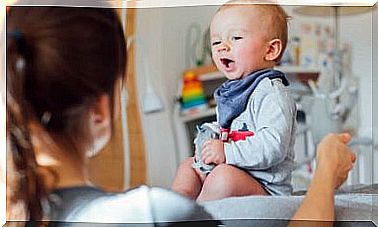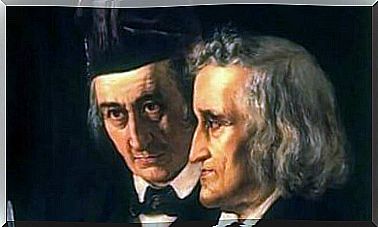What Is The Moro Or Defense Reflex In The Baby? – Being Parents
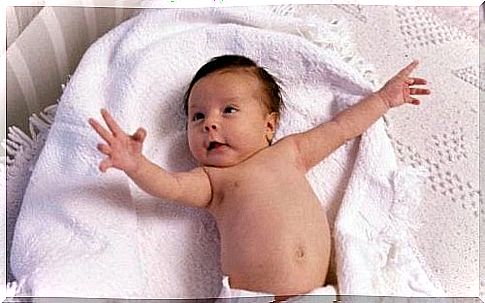
The first thing you should know is that it is not bad at all. It is simply an automatism or an involuntary reflex which disappears around 4 or 5 months. Below we will tell you more about it in order to answer all your doubts.
Why is it called the Moro reflex?
Moro’s reflection owes its name to the Austrian pediatrician who studied it at the start of the 20th century: Ernst Moro. It is defined as the instinctive reaction that appears when the child perceives that he has no secure point of support, or when he undergoes a sudden change of position.
Likewise, they may also experience it when facing an unexpected sound or when they notice that they are falling on their back. This is a really decisive reflex in the development of the nervous system of babies.
How, when and why?
Since during the first months of life the nervous system (among other aspects) develops in the baby, it is very common to see a series of changes, such as crying or the Moro reflex. In other words, involuntary reflexes tell us that the baby is developing normally.
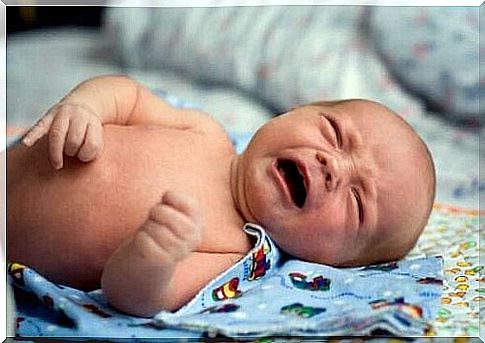 Those who study and monitor this type of reflex are doctors, and more specifically pediatricians. They will confirm whether the baby’s nervous system is developing properly or not. To do this, place the baby in a certain position to trick the baby’s brain into producing the response you want to observe.
Those who study and monitor this type of reflex are doctors, and more specifically pediatricians. They will confirm whether the baby’s nervous system is developing properly or not. To do this, place the baby in a certain position to trick the baby’s brain into producing the response you want to observe.
It is a small experiment to confirm or exclude the presence of the Moro reflex in the baby. During the consultation, the pediatrician places the baby on a very soft cushion, takes his head and then briefly simulates his fall, although he instantly picks it up with his hands to avoid touching the cushion.
Why are we doing this? Because by removing your own weight from the baby and making him believe that he is falling, we activate the response or the automatic reflex that you want to evaluate. Be careful, you never lift the child’s body, only the weight is lifted to simulate the feeling of falling.
Faced with this feeling of falling, the baby should jump. Then the normal response is for the baby to move the arms to the sides, placing the palms of the hands up, with the thumbs flexed. As the fear subsides and the baby relaxes again, he will retract his arms towards the body on his own, his elbows bent.
We have to keep in mind that babies’ brains continue to develop. Sometimes just the fact of being dreaming makes them feel this decompensation. Sometimes, even after a sneeze, they can react with the Moro effect. An unexpected sound or tickle alters their nervous system – still immature – causing them to react that way.
The Moro reflex is an experience necessary for development, but unpleasant for the baby. This reflex is an instinctive survival mechanism.
For the baby’s parents, the first time they see this reflex can be really dramatic, as they will see their baby stiffen and even take on a more colorful (or purplish) complexion due to the increased blood pressure caused. to fear. However, this is all within the normal parameters of development.
After going through those 5-6 seconds of fright, it’s normal for babies to cry haphazardly. At this time, it is extremely important to reassure them and help them relax again to avoid prolonged suffering.
On the other hand, it should be noted that some babies, even in the cradle and even asleep, feel the Moro reflex. Suddenly they stretch out their arms, become rigid and cry instantly.
How to notice the Moro reflex in the baby?
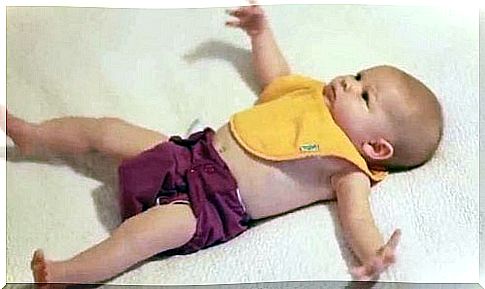
- Expression of fear in the baby’s eyes. Eyes wide open.
- The baby extends his arms with the palms of his hands up and his thumbs flexed. After a few seconds the reflex ends, the body relaxes and the arms return to the baby’s chest
- Sudden crying
What happens if the baby does not show this reflex?
In the event that the pediatrician notices the absence of this reflex, a problem in the nervous system will be suspected. Therefore, the existence of hemiplegia, a type of paralysis or even a simple fracture of the collarbone will be investigated. If it persists after 6, 7 and 8 months, one could also suspect a neurological problem.
Whenever your baby feels it, try to calm him down. Avoid hugging him immediately. Just stroke it and let it relax, little by little. So until the fear passes and he stops feeling unsafe. By your side, he will feel protected and calm down.
In case he suffers from this reflex too regularly, consult your pediatrician. However, remember: the Moro reflex is a primary movement that reflects the normal development of the newborn. Around 4 or 5 months, it will disappear.





